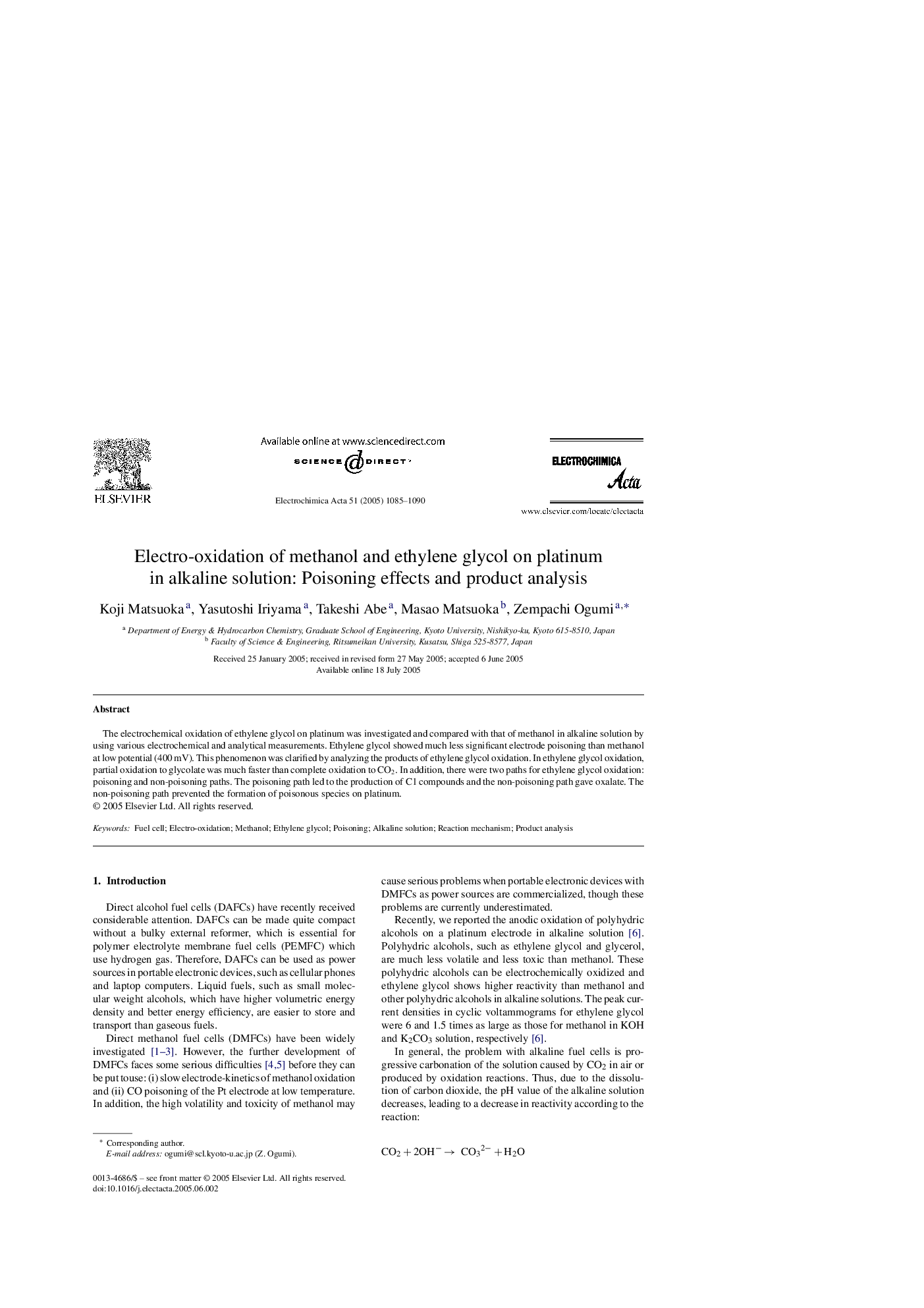| Article ID | Journal | Published Year | Pages | File Type |
|---|---|---|---|---|
| 10269255 | Electrochimica Acta | 2005 | 6 Pages |
Abstract
The electrochemical oxidation of ethylene glycol on platinum was investigated and compared with that of methanol in alkaline solution by using various electrochemical and analytical measurements. Ethylene glycol showed much less significant electrode poisoning than methanol at low potential (400Â mV). This phenomenon was clarified by analyzing the products of ethylene glycol oxidation. In ethylene glycol oxidation, partial oxidation to glycolate was much faster than complete oxidation to CO2. In addition, there were two paths for ethylene glycol oxidation: poisoning and non-poisoning paths. The poisoning path led to the production of C1 compounds and the non-poisoning path gave oxalate. The non-poisoning path prevented the formation of poisonous species on platinum.
Keywords
Related Topics
Physical Sciences and Engineering
Chemical Engineering
Chemical Engineering (General)
Authors
Koji Matsuoka, Yasutoshi Iriyama, Takeshi Abe, Masao Matsuoka, Zempachi Ogumi,
